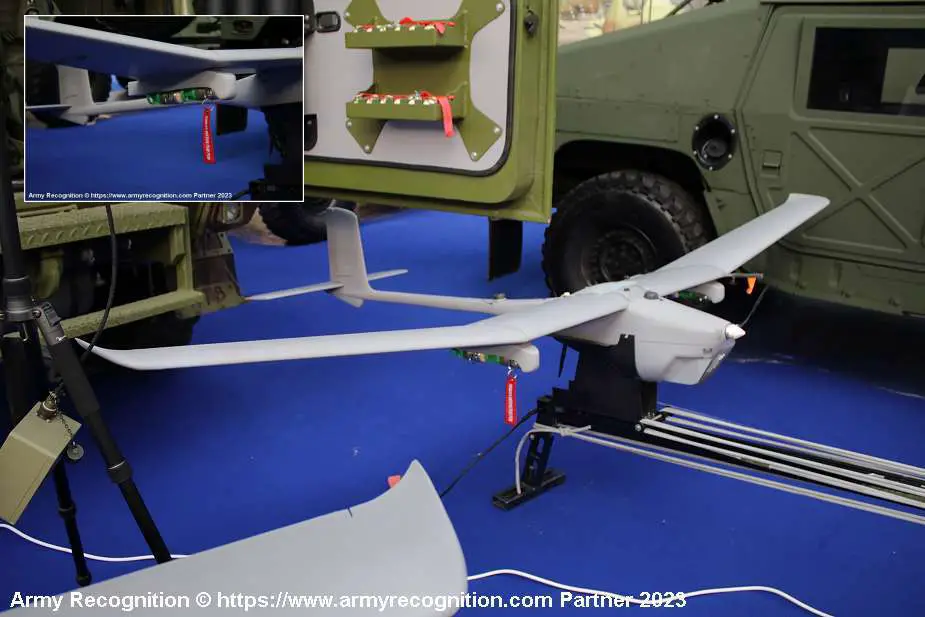Breaking news
Serbia expands Vrabac drone's role from surveillance to armed operations.
The Republic of Serbia's Ministry of Defense, through its Military Technical Institute, is showcasing the Vrabac short-range drone at the Partner 2023 exhibition in Serbia. Designed for a variety of reconnaissance and surveillance operations, the Vrabac is capable of monitoring borders, coastlines, forest fires, and critical infrastructure. In addition to its standard features, the Vrabac now also comes in a version equipped to deploy hand grenades, adding a new dimension to its operational utility.
Follow Army Recognition on Google News at this link

Originally designed for intelligence, surveillance, and reconnaissance (ISR) tasks, the Vrabac drone has recently seen an expansion in its capabilities with the development of an armed variant (Picture source: Army Recognition)
Reconnaissance and Surveillance operations
With a wingspan of 2,8 meters and a length of 1,94 meters, the Vrabac has a maximum takeoff weight of 9 kilograms and can accommodate a payload of up to 1,5 kilograms. The drone operates at altitudes ranging from 300 to 500 meters and cruises at a speed of 70 km/h. It can reach a top speed of 90 km/h and has a loiter speed of 55 km/h. The Vrabac boasts a maximum climb rate of 2,5 meters per second and offers an impressive operational endurance of 21,5 hours, covering a range of up to 225 kilometers.
The Vrabac features fully autonomous navigation and provides multiple takeoff options, including hand-launch and bungee-assisted takeoff. It supports waypoint-based flight, target tracking, and camera-guided navigation. For landing, the drone offers two methods: either utilizing an airbag and parachute system or executing a manually controlled belly landing.
Designed for a three-soldier operational team, the Vrabac package includes three drones, a ground control station, a remote video terminal, transportation gear, and a toolkit, making it versatile for a wide array of operational scenarios.
Armed operations
Originally designed for intelligence, surveillance, and reconnaissance (ISR) tasks, the Vrabac drone has recently seen an expansion in its capabilities with the development of an armed variant, as you can see on the picture above. This new prototype is equipped with two small underwing pylons, each carrying three M22 40 mm grenades. These grenades come in two types: bounding high-explosive anti-personnel fragmentation and bounding high-explosive anti-armor fragmentation.
While the standard Vrabac drone features an electro-optical payload under its nose for surveillance purposes, this armed version marks a significant enhancement in its operational scope. The drone has already entered serial production and is actively serving with the Serbian Armed Forces. Special forces units, specifically the 72nd Special Operations Brigade and the 63rd Parachute Brigade, are the primary operators of the Vrabac drone.
The armed version of the Vrabac drone, with its grenade-carrying capabilities, can serve multiple tactical purposes. The high-explosive anti-personnel fragmentation grenades can be used for suppressing enemy infantry and clearing out fortified positions. On the other hand, the high-explosive anti-armor fragmentation grenades can be employed against light armored vehicles or fortifications. This makes the armed Vrabac a versatile tool for both anti-personnel and anti-armor operations.



















